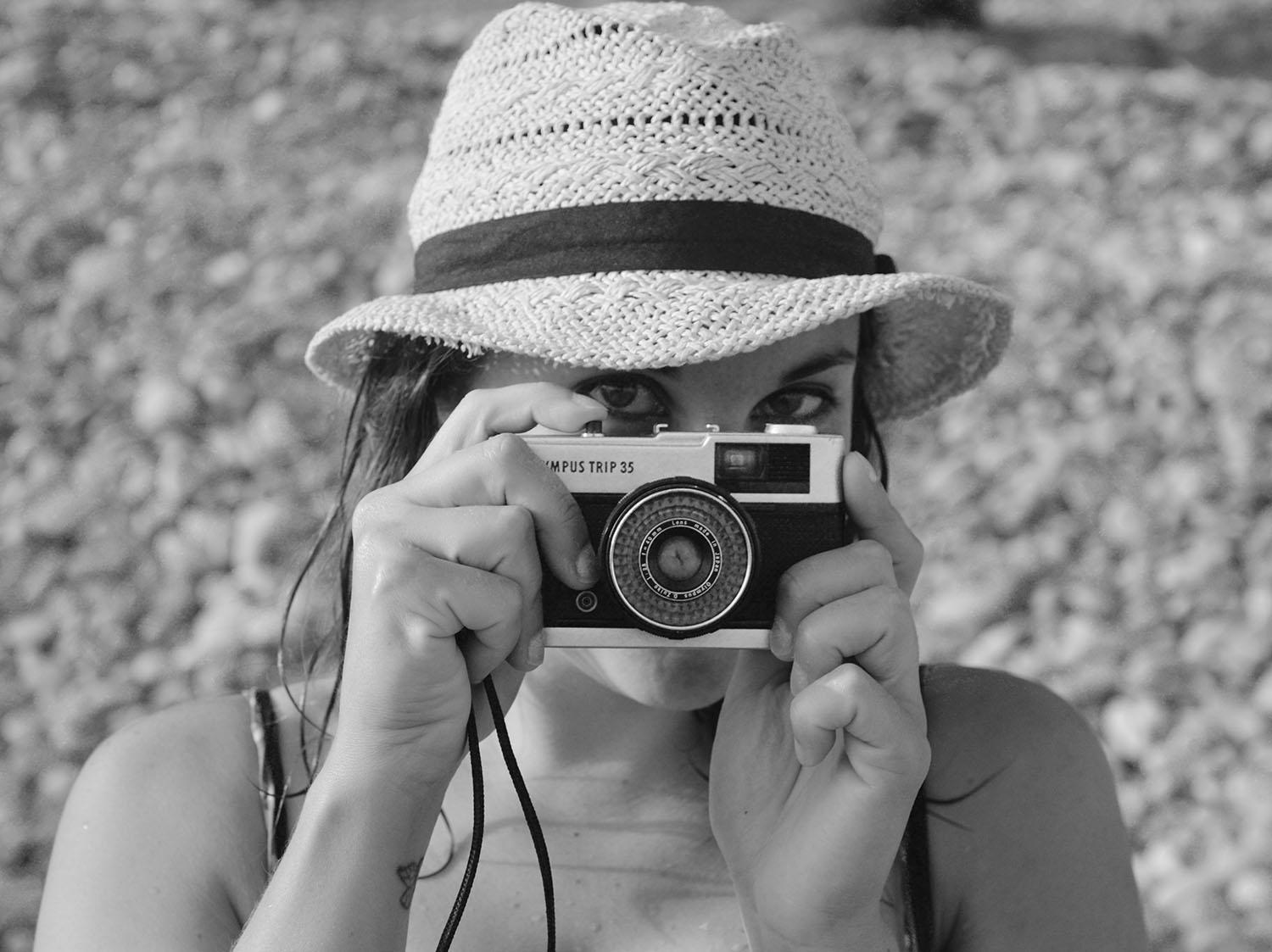Southern Crete Travel Guide: Lazy days with friends in southern Crete, a quiet oasis of unchanged mountain villages, astonishingly limpid seas, proper Greek tavernas and plenty of cats to cuddle. Between all the nothing we were busy doing I shot a little video of our hiking, paddle boarding and underwater adventures.


Southern Crete Travel Guide
Get ready for a riot of colour. The largest of the Greek islands, wreathed in mythology and arguably the birthplace of sophisticated European society, Crete is absolutely itself – a tapestry of warm red mountains, lush green valleys shaded by olive trees and endless ocean lapping on pebbly beaches, the water so translucent you can spot little fish busy on the seabed without using a snorkel.
Resorts and package holidays seem to crowd the north of the island, so we turned up our noses at such rabble and headed south instead. We stayed near to the lovely little town of Paleochora, which is just known enough to be stuffed with wonderful tavernas and trinket shops without losing its personality. Blue Paradiso was an Air BnB find which turned out to be charming – a very simple, sweet little bungalow painted in cool blues and whites, the shady terrace crowded with hibiscus. It sat next to its own private beach, crowned with a small concrete pontoon we spent most our time jumping off, swimming around or sleeping by in a striped hammock. There was also a bevvy of resident cats keen to be friends, so I was very happy.
If you’re looking for this level of charm and an escape from the crowds but are searching for something a little fancier, try Divine Property for luxury villas in Crete.
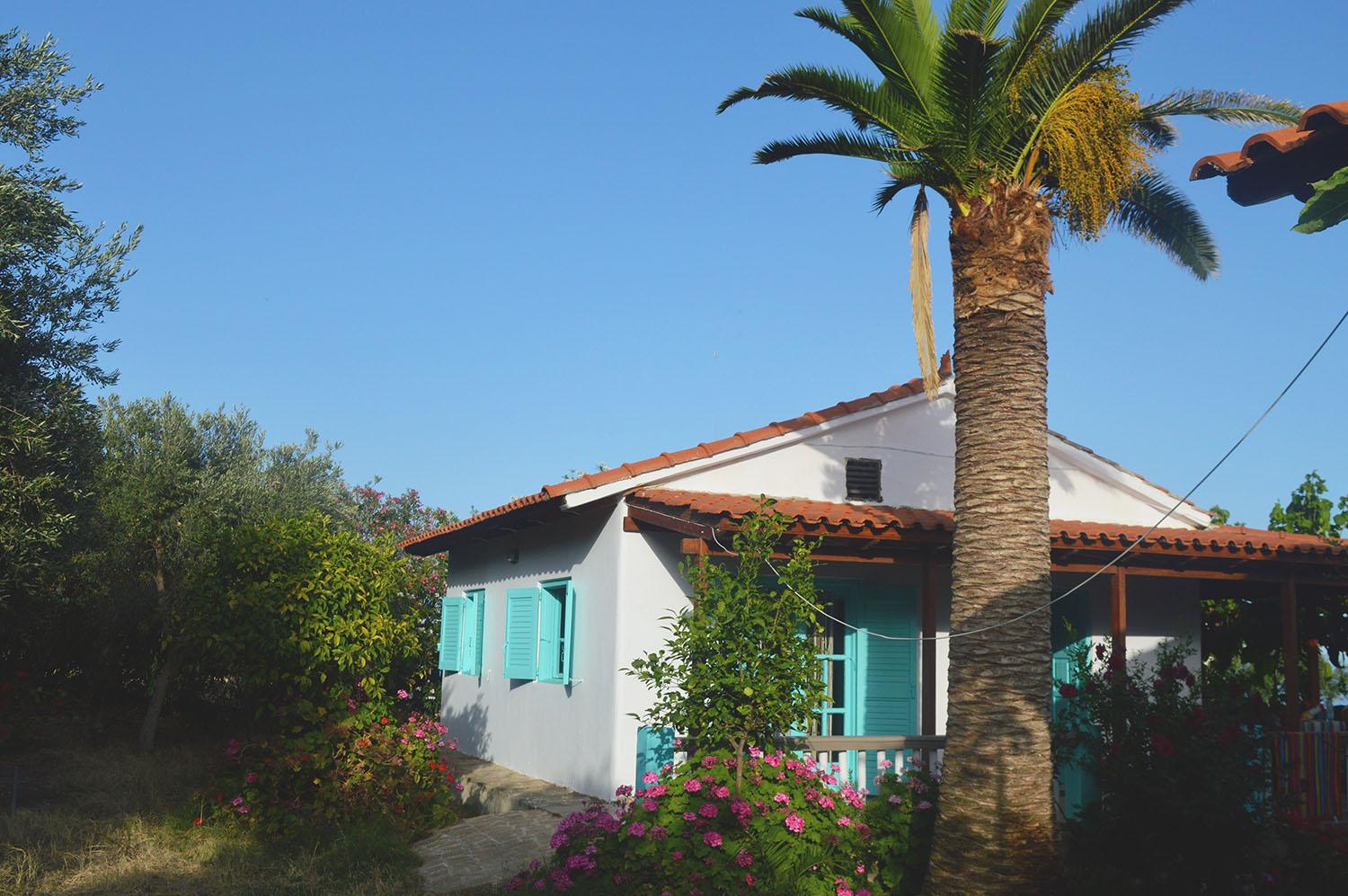

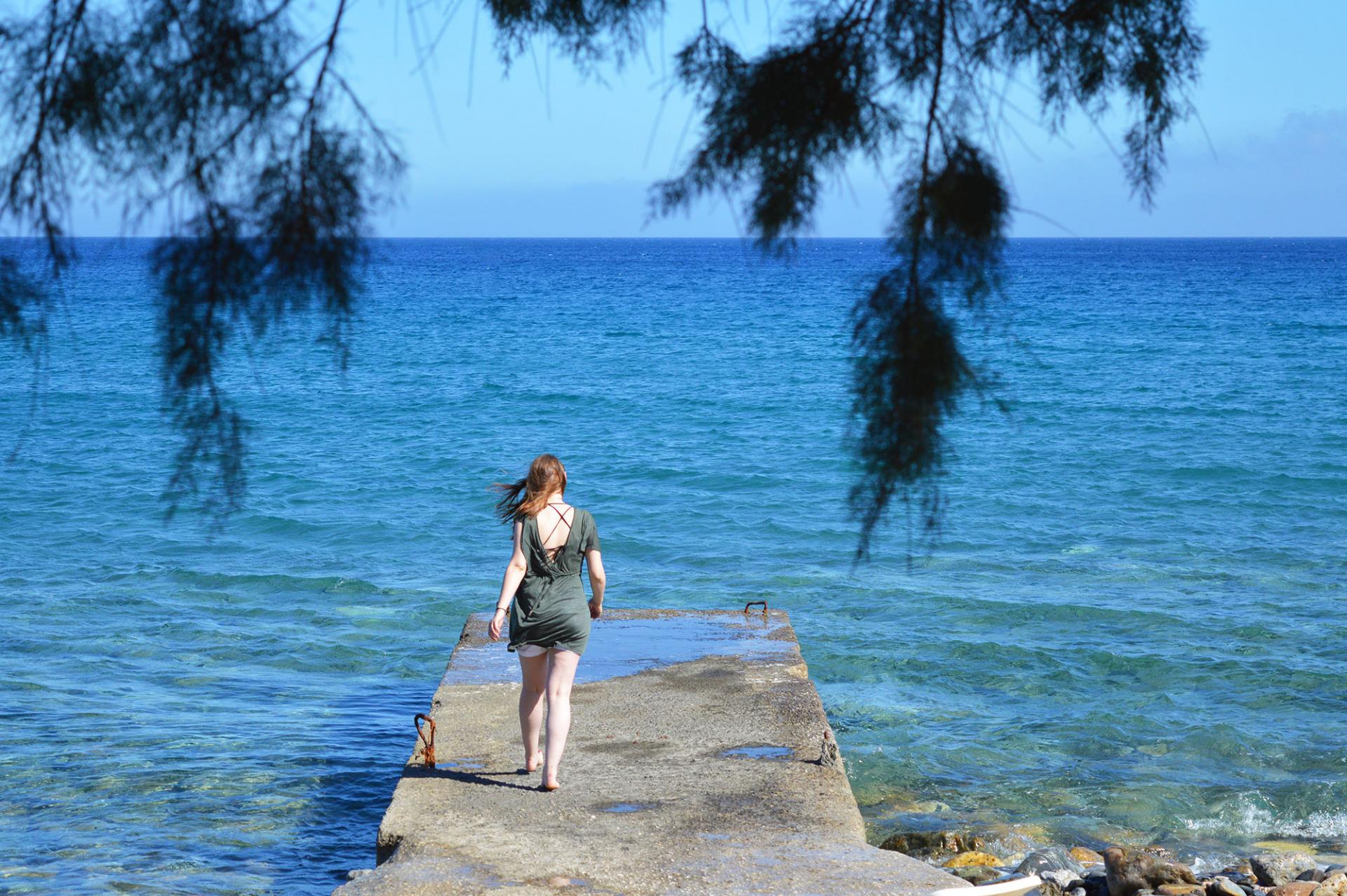
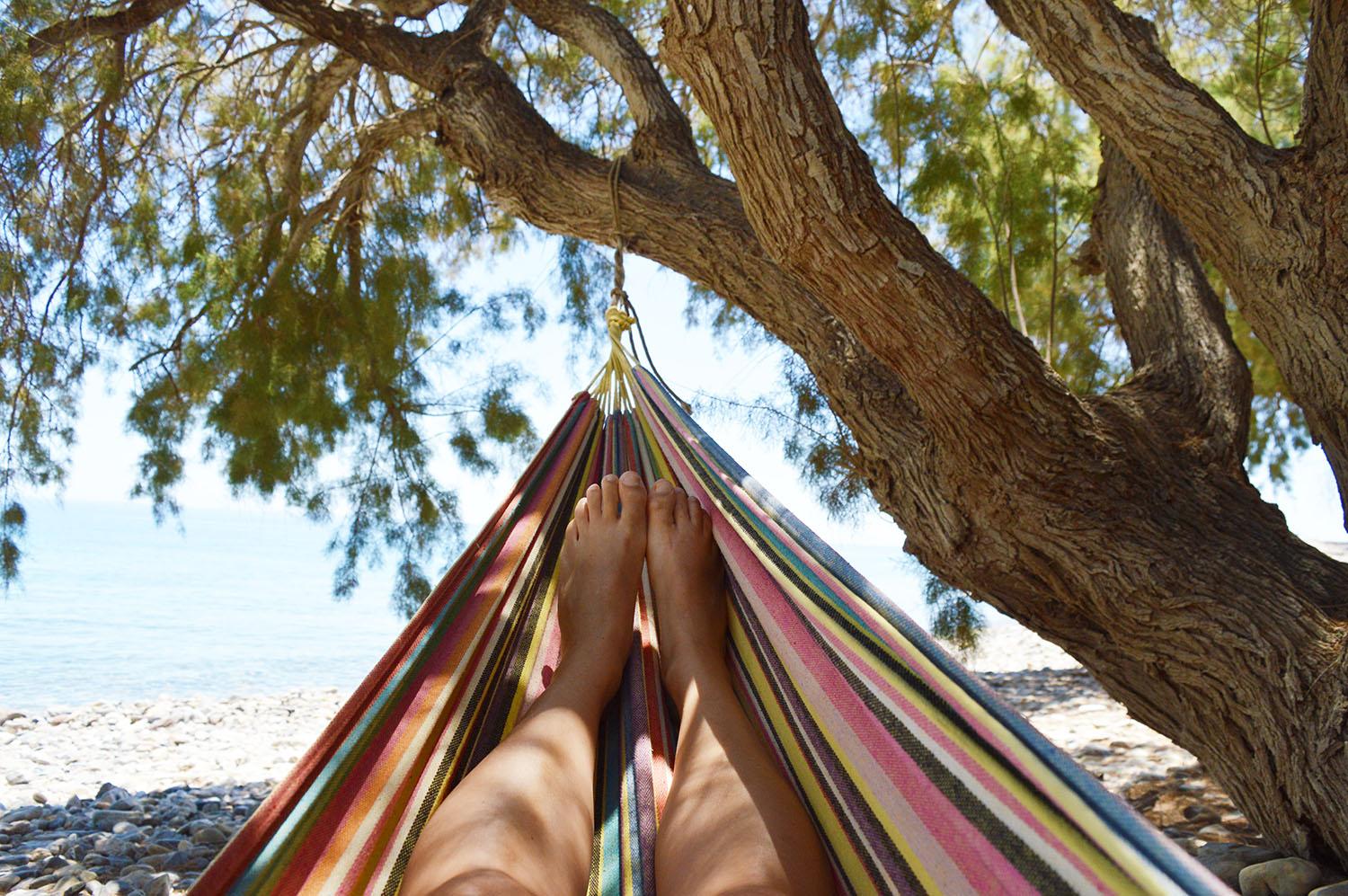
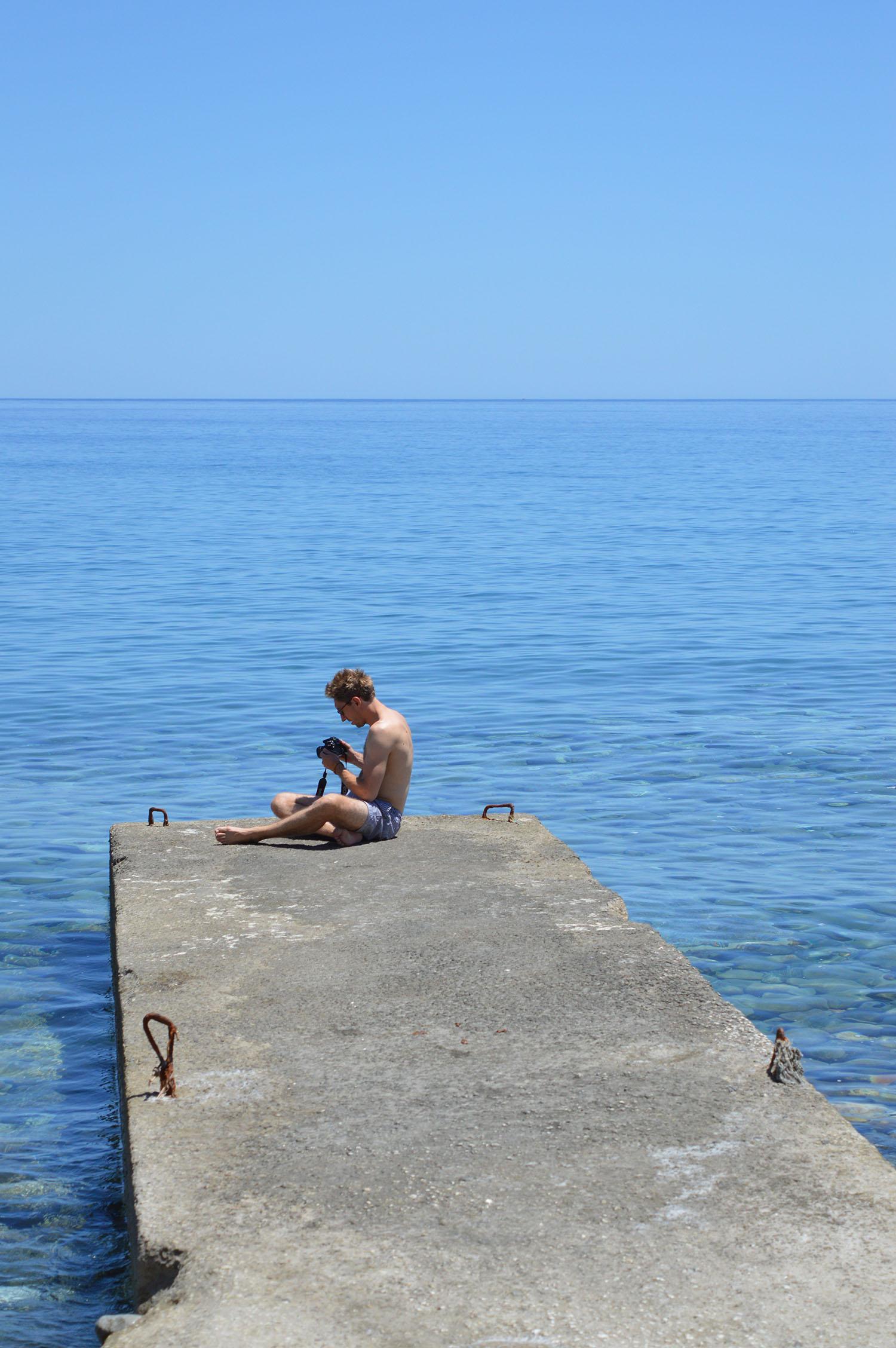
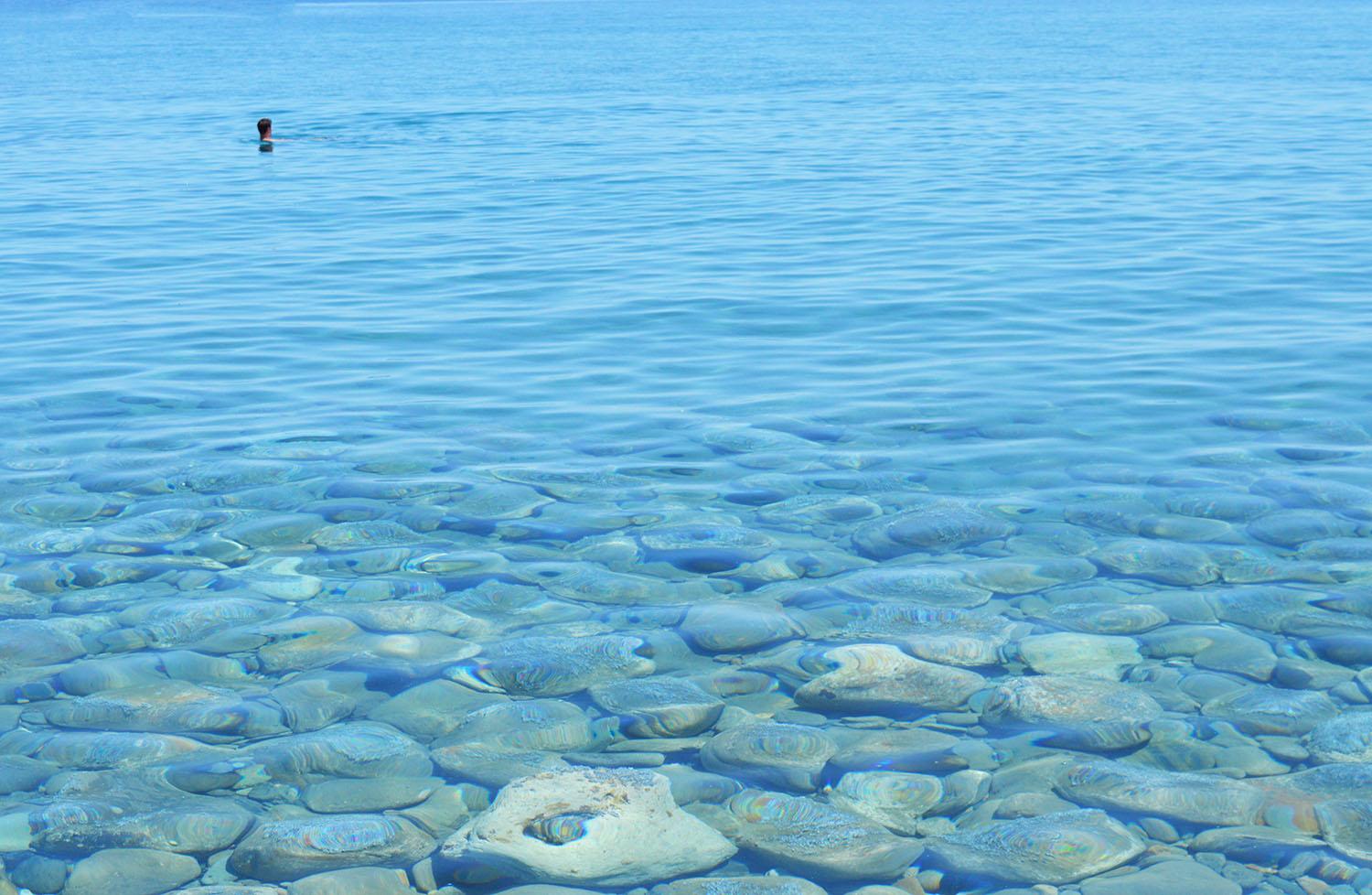
Padding around Paleochora
In the evenings we’d walk to town to eat ourselves silly on seafood, stifado and saganaki, all washed down with local wine and fiery raki. All of Paleochora‘s narrow alleyways look similar – higgledy-piggledy houses draped with flowers, fairy lights strung above your head, a taverna with wooden tables set out under a wizened wisteria tree. Pinterest, I have found your spiritual home. Each taverna served seemingly identical and consistently delicious local recipes, which was fine by me – I could live off salty Greek salads and feta drenched in honey forever. The only exception was The Third Eye, a rather hippie vegetarian restaurant we hunted down and loved – come for their incredible, delicately spiced curries in the evenings and Chai granola breakfast in the mornings.
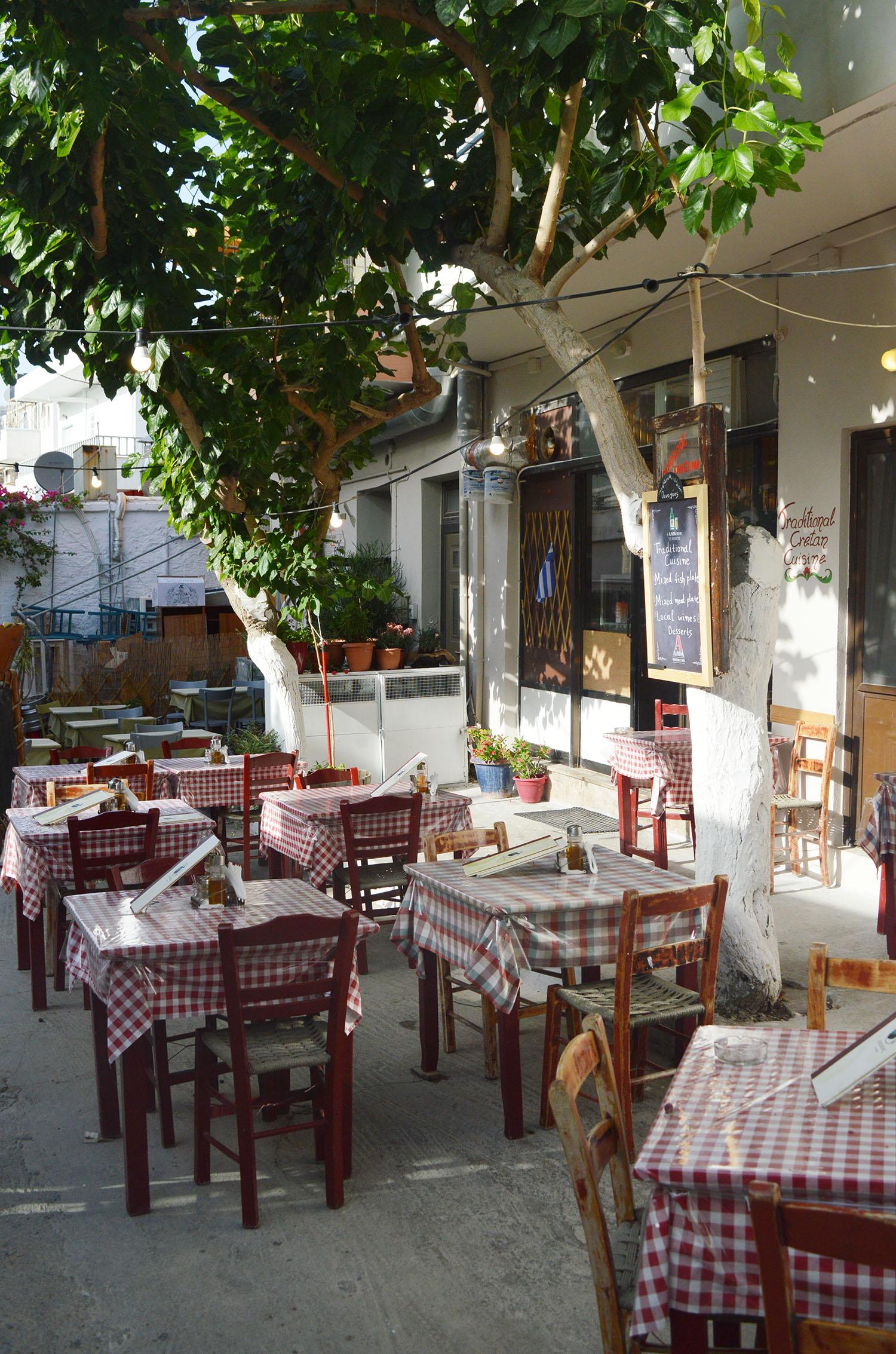
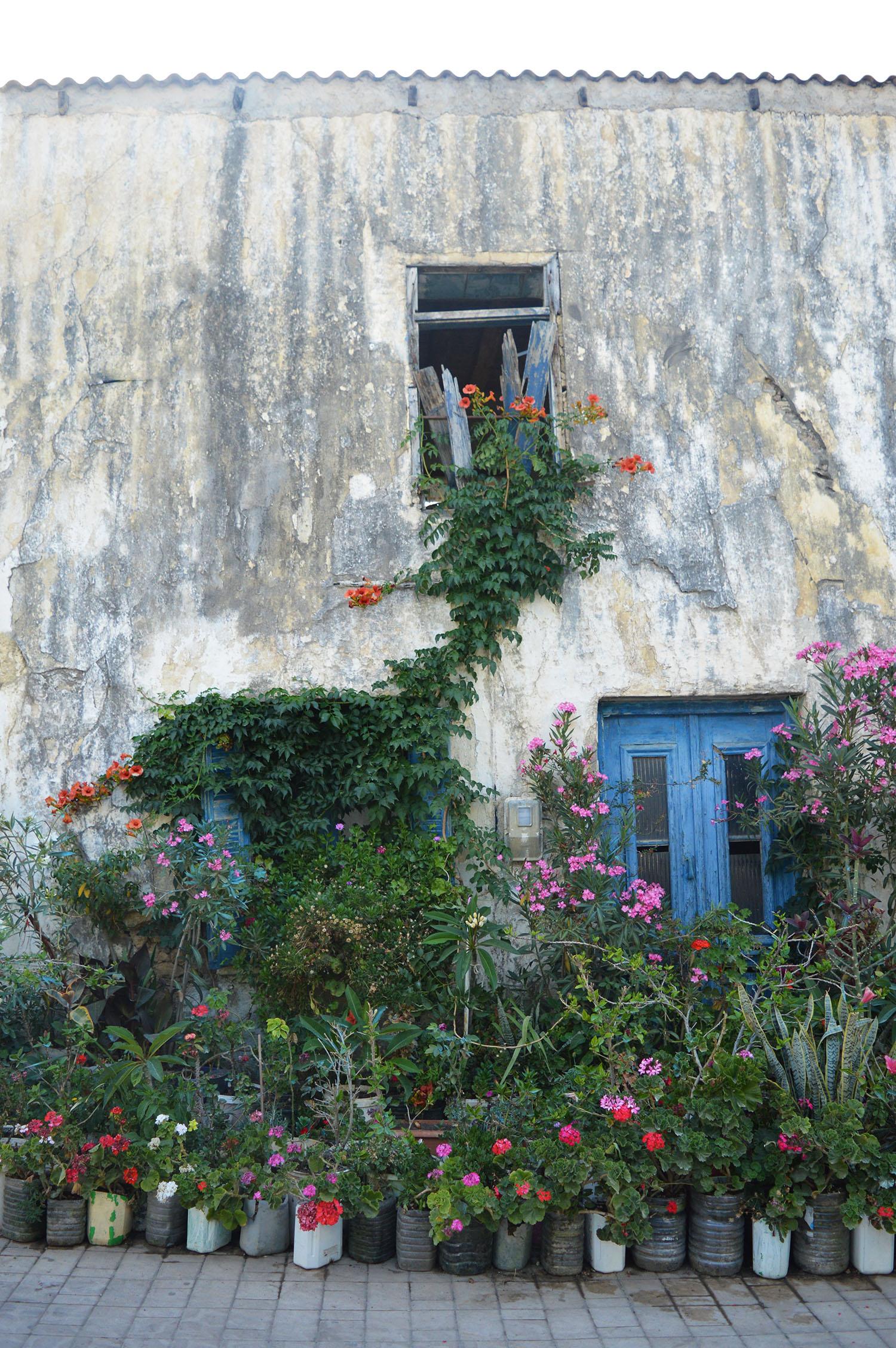
The island’s wild corners
And the rest of the time we went exploring. The craggy, untouched southern coast of the island is a gem. Our tiny little hire car (try Renter Center Crete for decent deals) was game for road trips along the coast to quiet beaches where we would rent kayaks and then spend the day far from everyone, paddling under the cliffs, usually completely alone except for the occasional passing fisherman. When the sun blazed hot we would moor up to rocks and jump off into the cool water to escape the heat. We all got incredibly brown and increasingly naked in the process – lots of nudity is always the sign of good travels in my book.

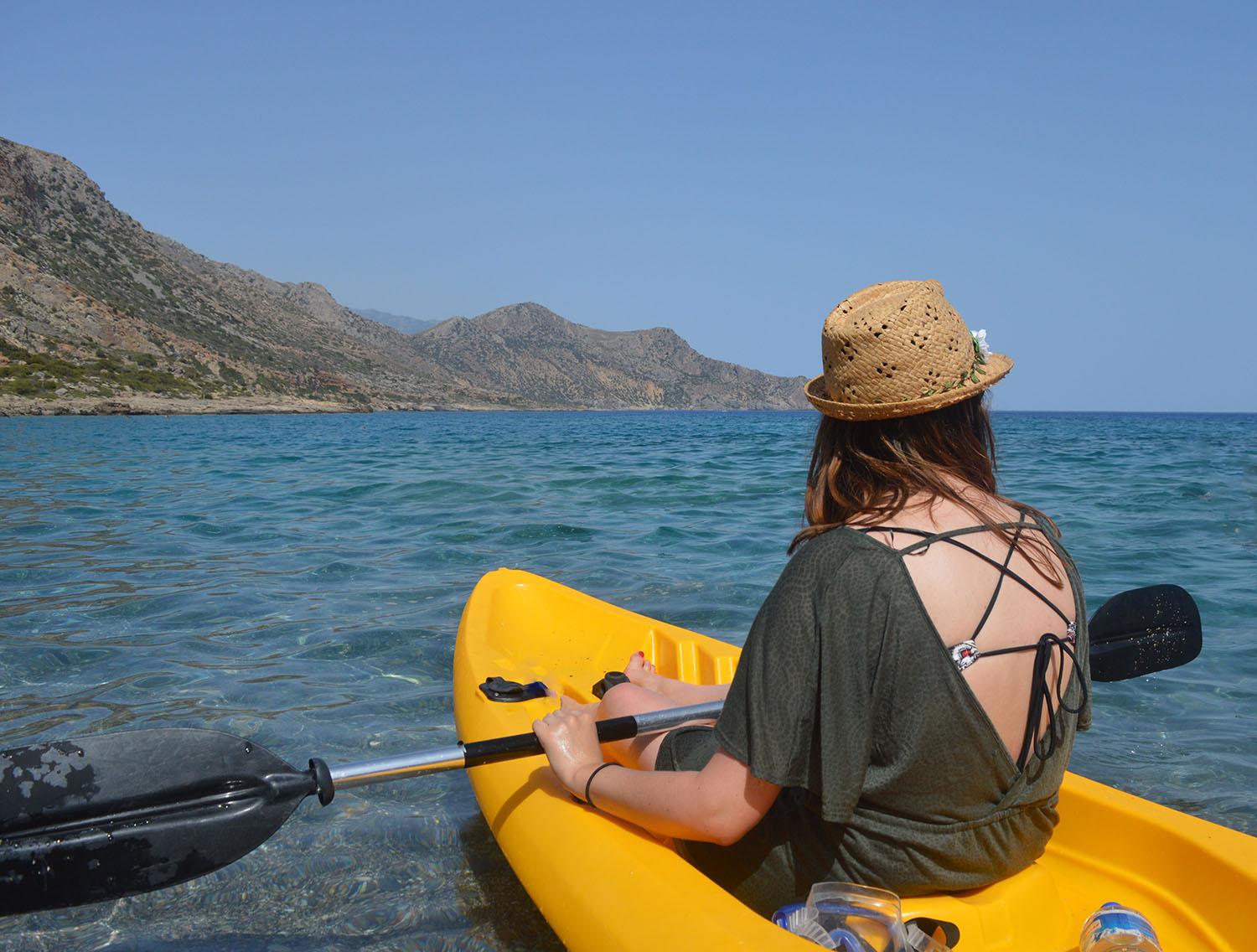


The island’s charm isn’t all on its coastal edges, though. Inland we drove up winding mountain roads, dodging wild goats, to the hamlet of Azogires, where Sofia’s Cafe serves the best omelette you’ll ever eat. Just up the road there’s a secret waterfall shrine where cold beers have been left in the water for wild swimmers to fish out, which we did with gusto.
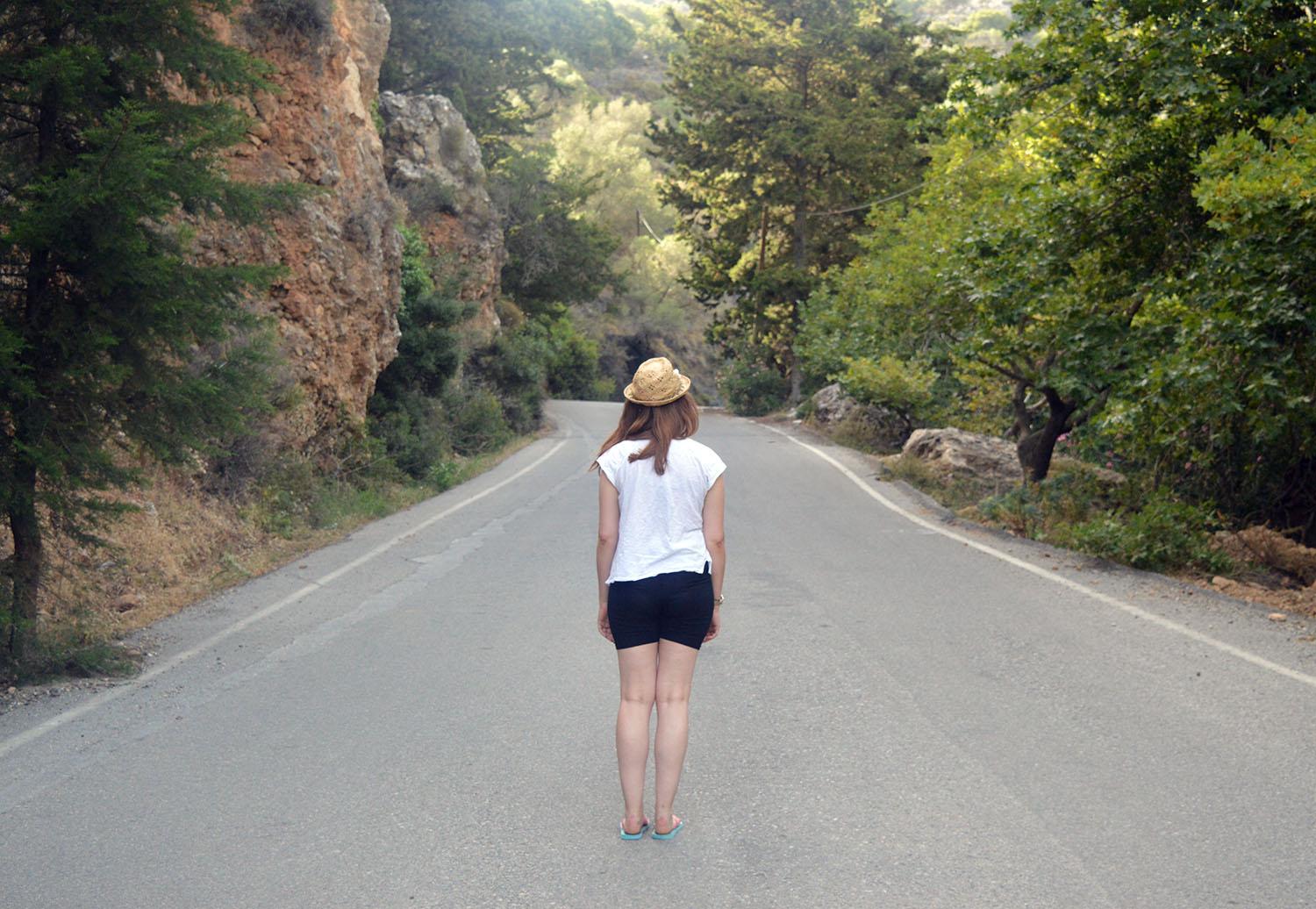
Whilst a car is pretty essential for beach-hopping on this side of the island, some of the south’s gems are accessible only by the big white ferries which chug up and down the coast each day. They may go slow, but I wish all methods of travel were this lovely – sitting on a painted bench drinking hot coffee in the cool morning air and watching the island go past is my idea of a very decent commute.
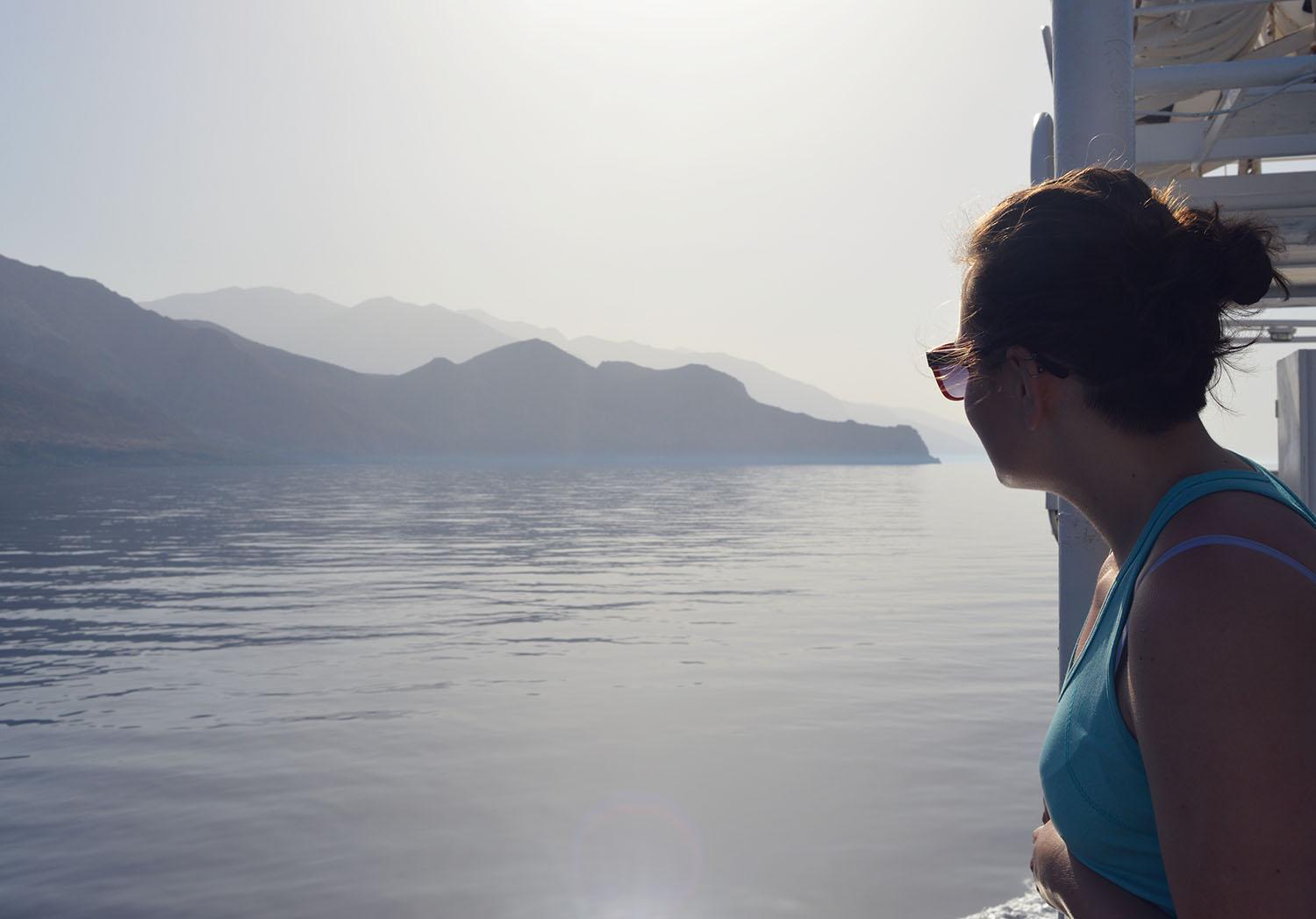
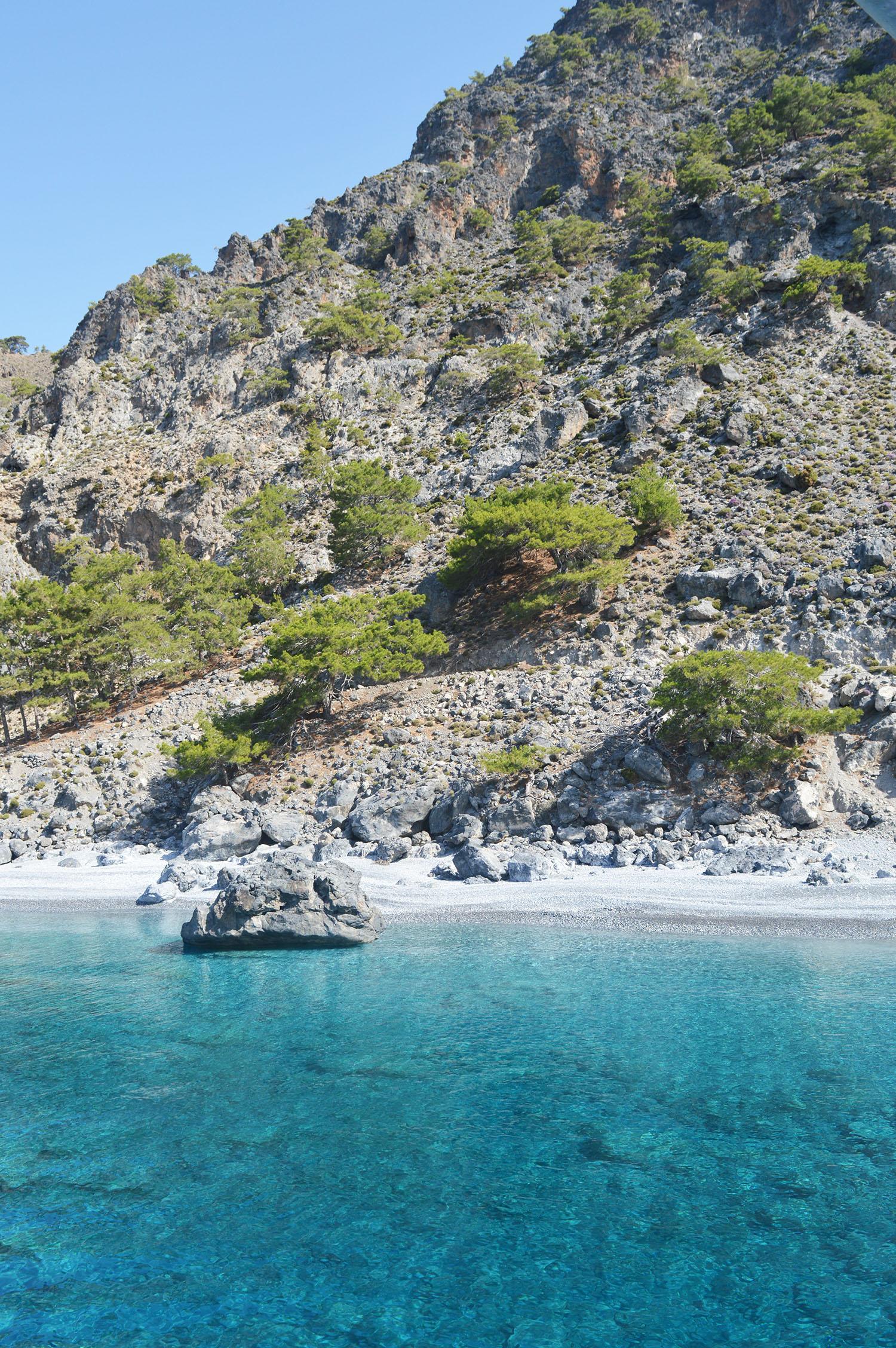
We caught the boat to Agia Roumeli, at the foot of the famous, cavernous Samaria Gorge, an unbelievably vast chasm fissuring through the White Mountains. Hike up a dusty track from the village and you enter an almost alpine landscape at the entrance to the national park. A narrow path skips over small streams and into the hills until you’re flanked on either side by totally sheer cliffs, sometimes so close together you feel like you could touch both sides of the gorge by reaching your arms out wide.
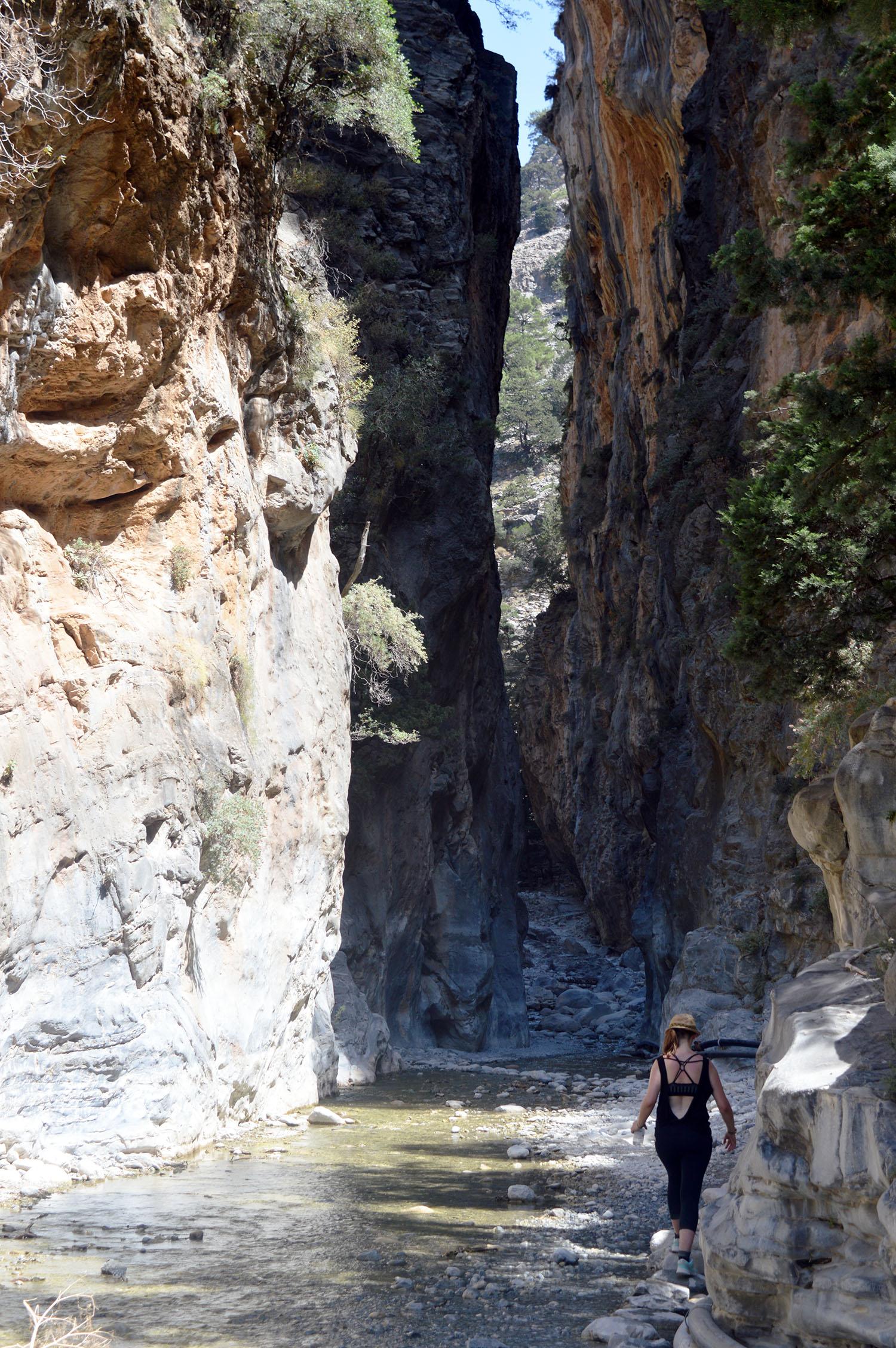
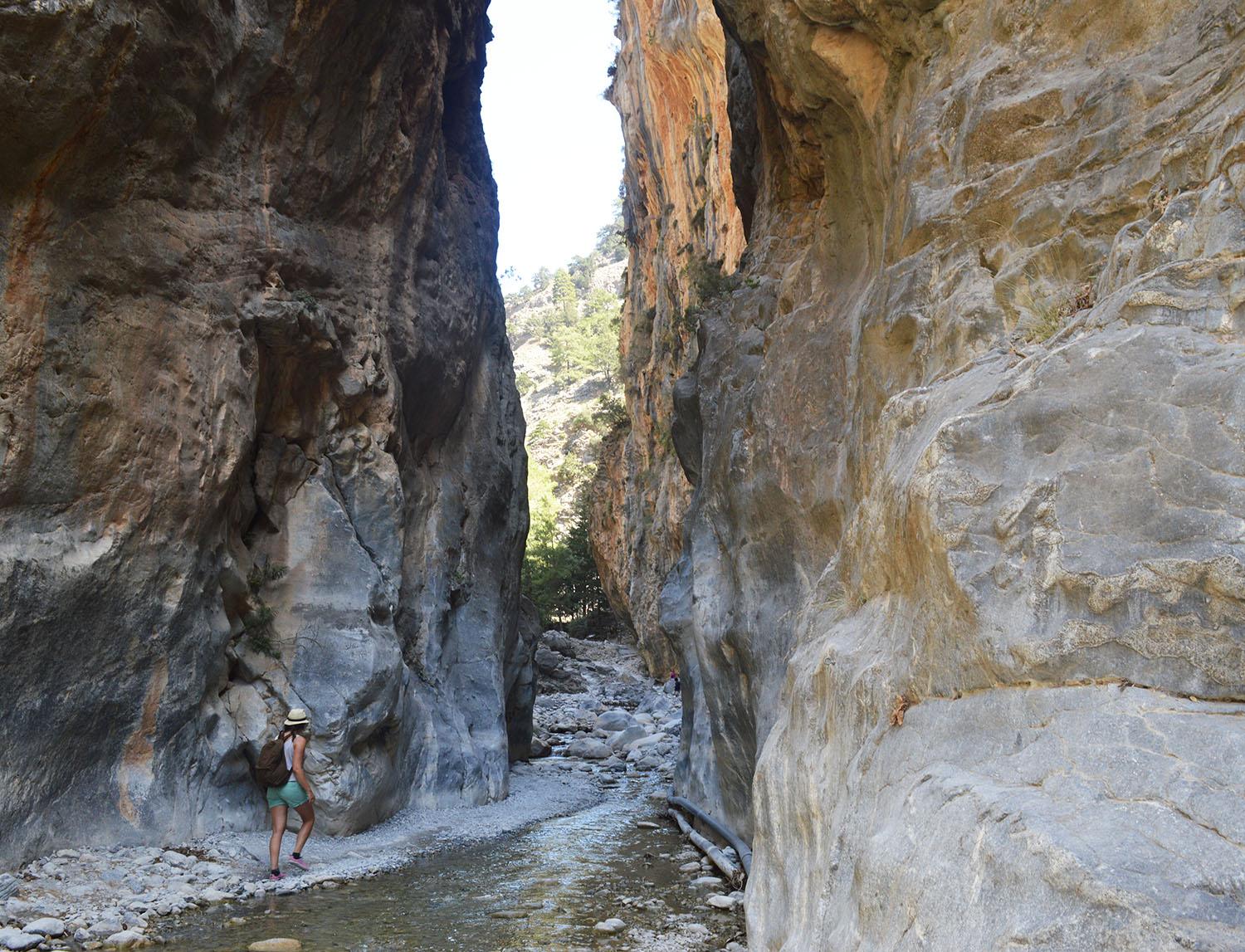
PADDLING AWAY
On our last day we borrowed a fleet of paddle boards and headed out to find a remote beach we’d seen which we knew was accessible only by water. This is the way to really see the coastline – paddle in hand and free to roam into caves, under cliffs and to tiny coves. Coming ashore on our beach after hours of hard paddling felt like discovering a new world. We climbed up the polished white rocks which hung over the water and then rambled along our secret beach, a paradise which we had completely to ourselves, if only for a little while.


